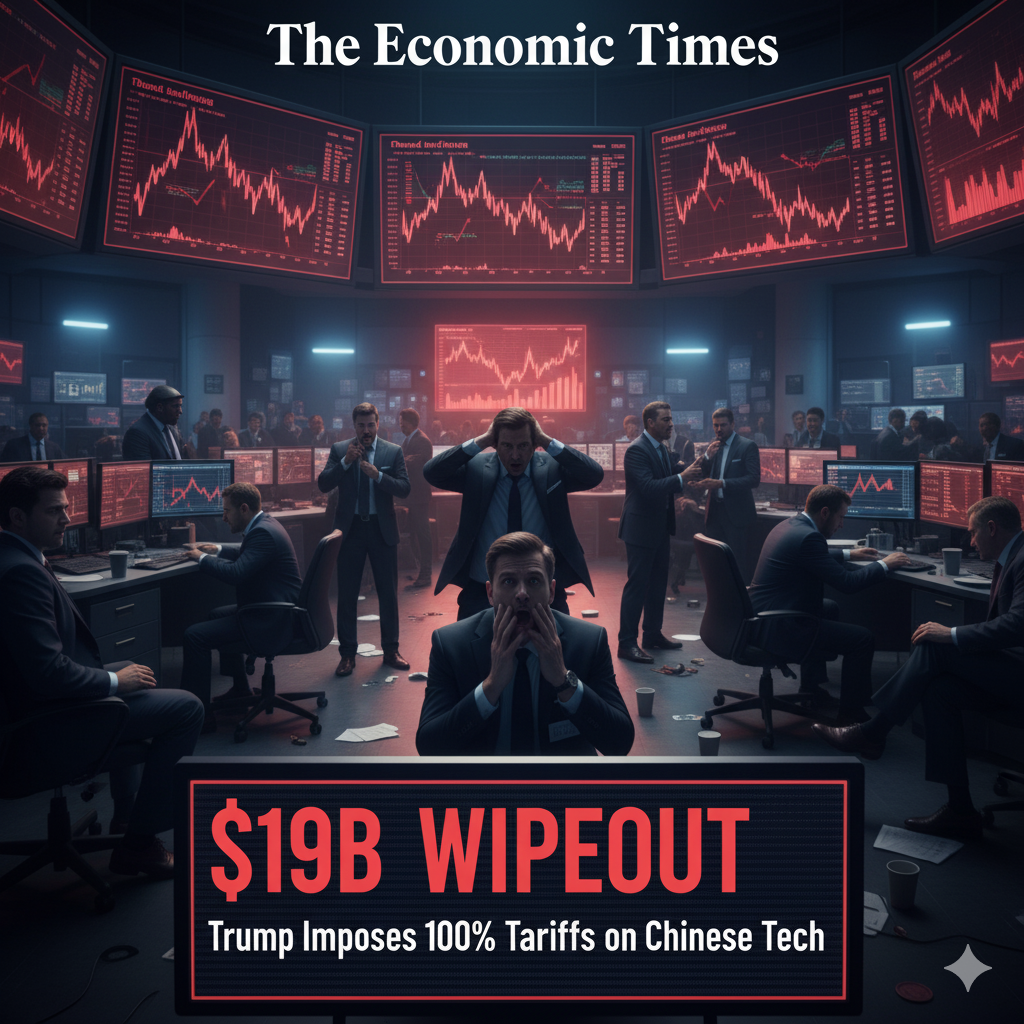The cryptocurrency market, often characterized by its volatility and sensitivity to global events, experienced a significant jolt recently as news broke regarding President Trump’s imposition of a 100% tariff on Chinese tech exports. The announcement sent shockwaves through financial markets worldwide, and crypto was no exception, suffering an estimated $19 billion wipeout in a single day. This abrupt market sell-off underscores the increasing interconnectedness of the digital asset space with traditional geopolitical and economic developments.
The decision to levy full tariffs on Chinese technological goods represents a dramatic escalation in trade tensions between the United States and China. Such protectionist measures are typically designed to protect domestic industries, but they often come with broader economic consequences, including disruptions to global supply chains, increased costs for consumers, and uncertainty for investors. In this instance, the sheer scale of the tariffs – a full 100% – amplified the market’s negative reaction, signaling a potentially severe impact on the tech sector, which is deeply intertwined with the digital economy.
Why did crypto react so sharply? Several factors likely contributed to the rapid decline. Firstly, cryptocurrencies, despite their decentralized nature, are not immune to macroeconomic sentiment. When traditional markets, particularly the tech-heavy Nasdaq, experience a downturn due to economic uncertainty or trade wars, risk assets like cryptocurrencies often follow suit. Investors tend to retreat from higher-risk investments in favor of safer havens during times of perceived instability.
Secondly, the technology sector is a significant driver of innovation and adoption within the crypto space. Many blockchain projects and cryptocurrency companies rely on technological advancements, supply chains, and market stability that could be jeopardized by escalating trade conflicts. The uncertainty surrounding the availability and cost of components, coupled with potential impacts on the global economy, can dampen investor enthusiasm and lead to capital flight.
As reported by The Economic Times, the swiftness of the market’s reaction highlights the inherent risk appetite within the crypto ecosystem. While some proponents argue for crypto’s role as a hedge against traditional financial instability, events like these demonstrate that it can also be highly correlated with broader market movements, especially those driven by major geopolitical shifts. The $19 billion loss serves as a stark reminder that even in the rapidly evolving world of digital assets, external economic and political forces can exert immense influence.
Looking ahead, the crypto market will likely continue to monitor the evolving trade relationship between the U.S. and China. Further escalations or de-escalations could trigger additional volatility. This event also reinforces the need for investors to remain informed about global economic trends and to consider the potential impact of such developments on their digital asset portfolios. While the long-term trajectory of crypto remains a subject of ongoing debate, its short-term vulnerability to significant geopolitical actions is undeniably clear.




